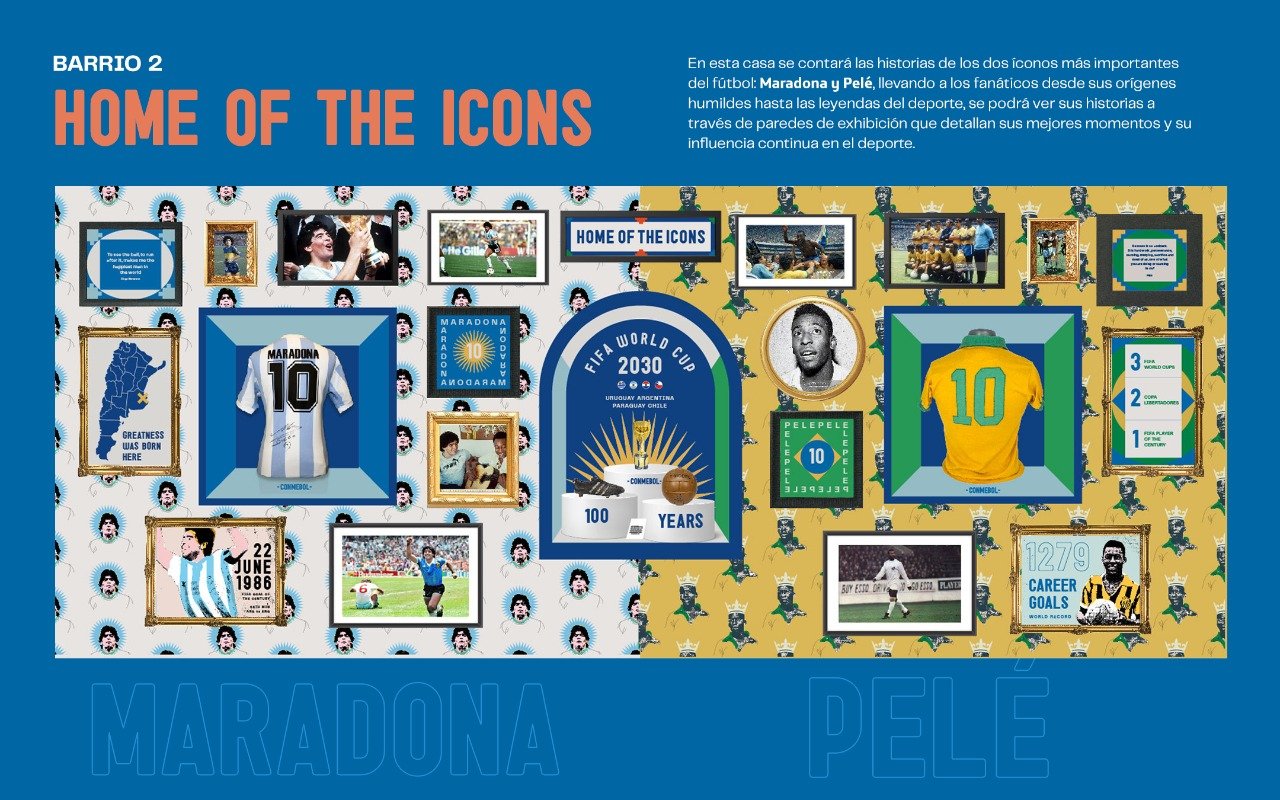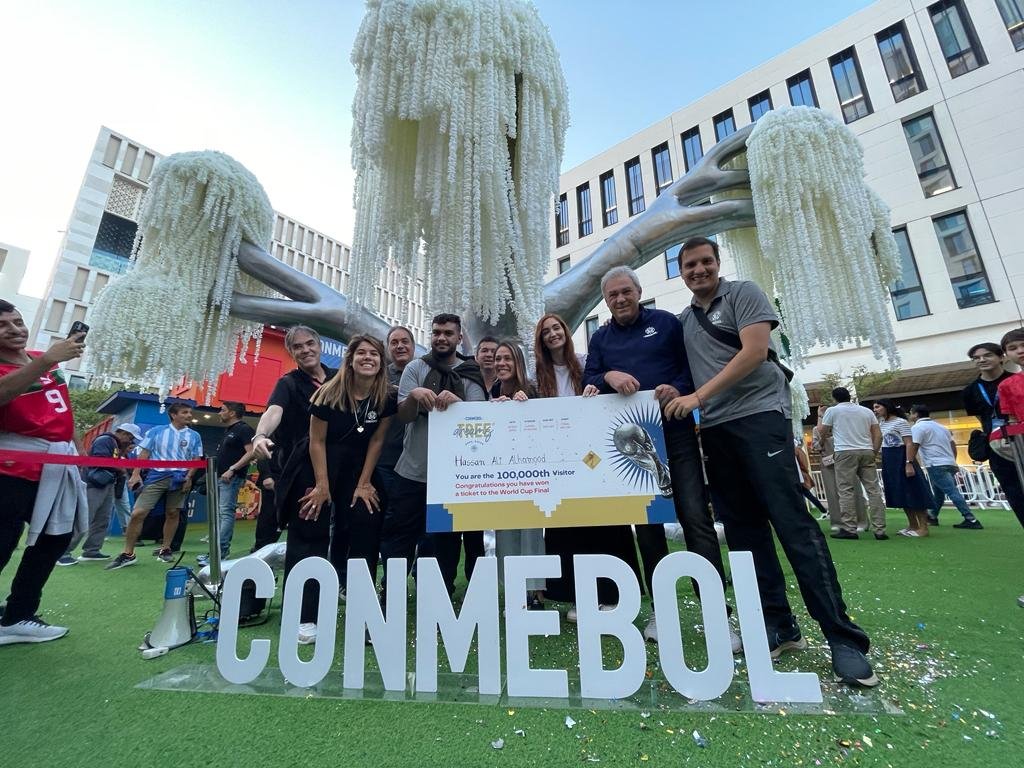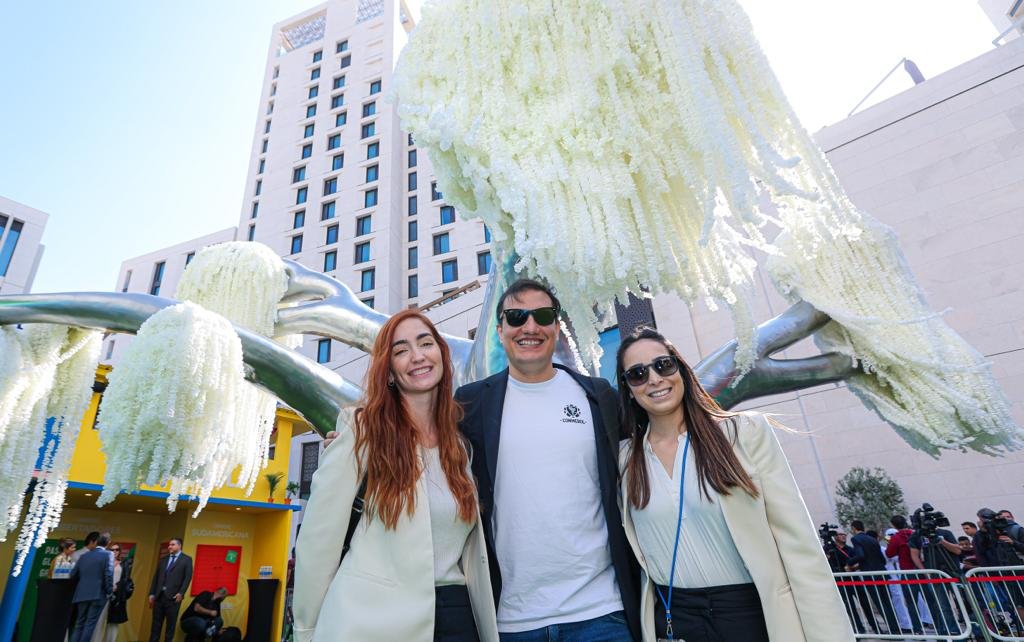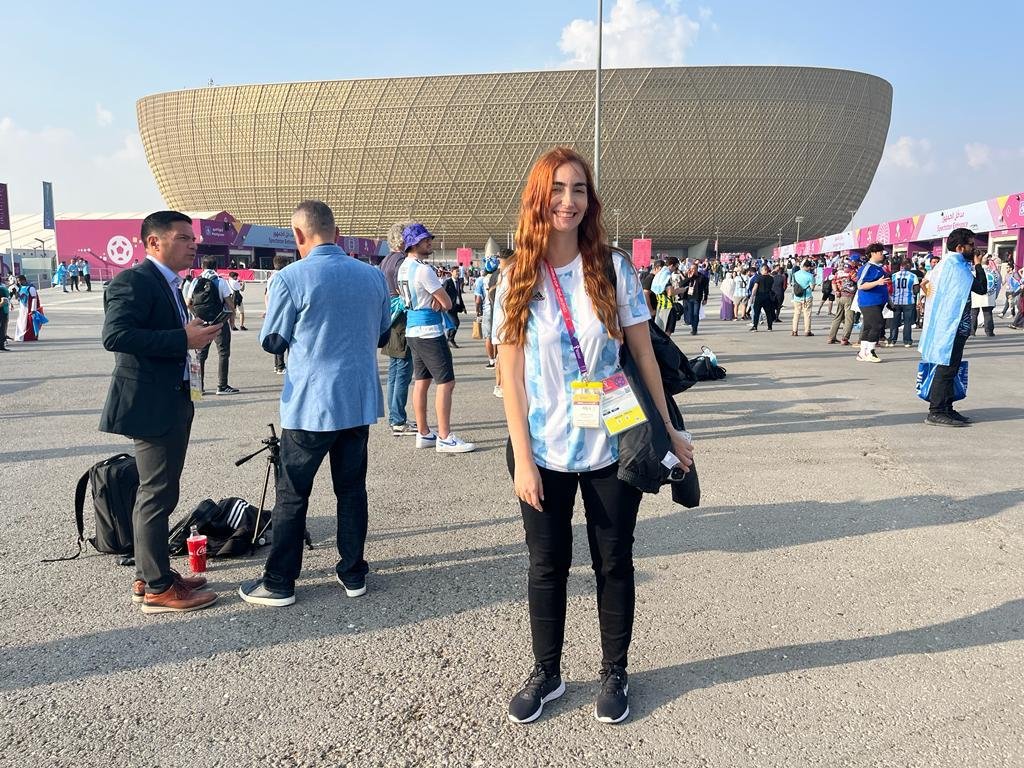Interview with Cristina Benitez, Digital Communication Manager at CONMEBOL
Digital technologies open up growth opportunities for sports organisations, offering them the potential to connect further with fans through innovative and personalised experiences, improve internal processes, or enhance sports performances. So, what digital initiatives have been implemented by prominent leaders in the sports industry?
Before diving into CONMEBOL digital communication initiatives, how did you experience the recent FIFA World Cup?
There are no exact words to describe the experience we as a Confederation have lived during the FIFA World Cup. In addition to living the matches, we had a physical space called CONMEBOL Tree of Dreams where more than 116 thousand people from all over the world passed by, to whom we could show South American soccer's greatness.
The days were very exciting; we supported our teams with every result, and to close the experience with a golden brooch: the Cup returned to South America in the hands of the Argentine team, which represents an enormous source of pride for all South Americans because they made us believe in greatness again.
Can you please describe a typical day in your role as a digital communication manager? What are the main duties and tasks you typically work on? And how is your team structured?
Since 2016, with Alejandro Dominguez as President of CONMEBOL, the role of the digital area has taken huge importance. Before then, it was not a consolidated department; only two people managed two accounts from the press area.
As of 2018, we are in charge of training a multidisciplinary team, made up of 11 internal people and external agencies, to carry out the communication of all the actions carried out by the Confederation. We have gone from two accounts with an audience of approximately 2 million people to 65 digital channels and an audience of approximately 55 million.
The day-to-day is about organising the actions we have to communicate, scheduling them, and finding the right channels to share what we are doing. To do this in an orderly manner, the strategic planning sessions are long, and we work months before the beginning of each year to understand how we will make the most of everything we have to generate a communicational impact and achieve our objectives. This is done not only for the digital area but also transversally as a support area for the other departments of CONMEBOL.
What are the main missions of the digital communication department? And how do you ensure that CONMEBOL's messaging is consistent across all digital channels?
The main mission of the area is to effectively communicate what is being done by all areas of CONMEBOL, to meet the commercial objectives we have with the different partners and, above all, to deliver to the fans the type of content they are looking for. To achieve this, we work together with the Marketing area to understand the consumer and with specialised agencies to find the right formats to deliver these messages.
What tools and technologies do you use to capture and produce content during and after games?
We use different tools, both for the communication area and for the digital area, since we work in both areas from this department. From social listening tools to understand how the numbers and general KPIs are moving, graphic design and content management platforms, quick video editing platforms, statistical data platforms, and sentiment tools that help us understand if the impact is positive or negative in the publications we are making, to tools that help us measure the Media Value to be able to report to our business partners the performance of our branded content.
It is very important to have well-set objectives for each type of communication to effectively measure what we are doing and make the most of the tools we have contracted.
What are your main challenges when capturing and producing live content (process, collaboration, tools, etc.)?
The biggest challenge when working with live content is the organization of the team to be able to be attentive to everything that is happening and capture the exact moment of a goal, play or situation that we believe can generate a great impact on our digital channels.
After 5 years, this process is already defined with the partner agencies and is no longer so difficult. But when there are several simultaneous matches and tournaments of other categories, the process of "filtering" these contents can become a great challenge for all involved.
How do you measure the effectiveness of your organisation's digital communication efforts? What metrics do you use?
With measurements, but before that, with a correct setting of KPIs for each action we carry out. Depending on the type of action we lead, the metrics may vary between audience impact, message awareness, the feeling we want to achieve in the communication, fan loyalty, open rates, conversions and brand rating.
How do you balance the need for engaging and timely content with the need for accuracy and thoroughness?
Choosing the right channels for each type of communication. It sounds basic, but when the flow of communications is enormous, it is an enormous challenge to understand what to communicate and what not to communicate. Strategic thinking is often more about what not to do than what to do.
How do you collaborate with your members' digital communication departments on digital communication efforts?
We have direct communication with Member Associations and Clubs that make up our Confederation and tournaments. We work together in the distribution of certain content, with collabs, crossposts and different tools offered by the platforms.
Also, when we carry out campaigns or certain changes, we talk to them to understand their thoughts, share content, etc. Working on the relationship with them is key to the success of what we do.
How do you stay updated with the latest trends and best practices in digital communication?
As part of their job description, each person in the digital team must be aware of trends, regardless of their specific role within the area. Also, with the agencies we work with, we ask that from time to time, they do a survey of trends in the world of sports and entertainment, not only in soccer, because there are a lot of actions that can inspire us to take the content differently.
It is important to keep our eyes open to what is happening outside the box. We also work with different platforms such as META, Google, YouTube, TikTok, etc., so that they can tell us what changes they will be making and be able to respond to what the algorithms of these platforms will also require us to reach the consumer.
How do you envision the role of digital communication in sport governing bodies evolving over the next 5–10 years?
Digital technology, not just social media, has unlocked a great opportunity to reach fans with innovative and personalized experiences in the world of sports. Sometimes, however, having rigid structures in place for a long time makes processes more flexible and complicated, but not impossible.
To really make the most of what the digital world has to offer, it is important that from the digital area, we do not work as an isolated area believing that only with communications, "doing digital", we will achieve this impact. We must work with the organisation's different areas and have a common business objective among all to get the most out of it, both for the organisation and the fans.
To change something in the consumer, it is necessary to get to their hearts, touch a fibre, reach the soul and make them loyal. We must take advantage of having a passion-based product and generate a cultural change in our hands.
Sport is a transformative social force; we have a great responsibility and opportunity to impact lives and, with the opportunities that digital platforms give us, we are much closer to doing so than ever before.
We must work together with the Marketing area to understand what the consumer wants.
We must work with our broadcasters to understand how consumers want to consume sports today and give them exactly what they want.
We must work with our business partners to understand how to deliver value.
We must work with data management to provide fans with an integral experience of the sport they like to consume because today, they no longer want to watch a traditional broadcast; they want a 360º and personalised experience.
To achieve all of the above, we must also work internally on cultural changes in the organization, transforming the way we work to have the fans as our main focus because if they are happy with what we deliver, the revenue and other objectives will be fulfilled in addition.
The advantage of digital is that it allows us to work with trial and error and react to what the fans are asking us to do. Starting small and then taking big steps is something that has worked for us every time. We still have a great challenge in expanding and understanding what this new era will bring. The digital world is dynamic, and we must have structures that are not too rigid to be able to react to these changes.
Technology is not only changing how our fans consume our content, but it is also changing the world. We must deeply understand how this affects the industry and extreme responsiveness to deliver what the fan wants.
What advice would you like to give to a digital manager who wants to improve its digital communication journey?
I am a big believer in order, so I believe things should be done thoughtfully and analysed way. First, something basic: what are the objectives of the organisation? After that: what will be the digital objectives to help meet the organization's basic objectives? From there: PLANNING: strategy and implementation. MEASURE, MEASURE, MEASURE.
Have a team with expertise in everything: creativity, distribution, media, analysis, and data. And after that: to have a great capacity of reaction to change what does not work and sustain what works. It is extremely important to invest in understanding WHAT the fan wants and not the other way around, not to put out things without knowing if it is what they want or not; that would be a waste of time.
And many times, we have done it the other way around until we learned. And finally: TAKE A CHANCE, TEST, FAIL AND TRY AGAIN.







